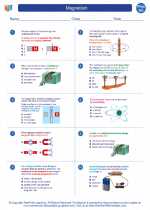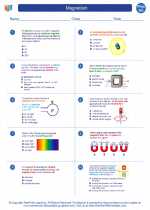Nuclear Fusion
Nuclear fusion is a process in which two atomic nuclei combine to form a heavier nucleus. This process releases a large amount of energy and is the mechanism by which the sun and other stars produce light and heat. Fusion reactions are the source of the tremendous energy output of hydrogen bombs. Achieving controlled nuclear fusion on Earth is a long-standing goal of nuclear physics and engineering, as it has the potential to provide a nearly limitless and environmentally friendly source of energy.
Key Concepts
- Fusion Reaction: The process in which two light atomic nuclei combine to form a heavier nucleus, releasing a large amount of energy.
- Conditions for Fusion: Fusion reactions require extremely high temperatures and pressures to overcome the electrostatic repulsion between positively charged nuclei.
- Fusion Products: The products of fusion reactions are typically helium nuclei (alpha particles) and a release of energy in the form of high-energy photons.
- Energy Potential: Fusion has the potential to provide a nearly limitless and environmentally friendly source of energy, as the raw materials (e.g., isotopes of hydrogen) are abundant on Earth.
- Challenges: Achieving and sustaining controlled nuclear fusion on Earth presents significant technical challenges, including the confinement and heating of the fuel plasma, as well as the extraction of energy from the fusion reaction.
Study Guide
To understand the concept of nuclear fusion and its potential for providing clean energy, students should focus on the following key areas:
- Understanding the basic principles of nuclear fusion, including the nature of the reaction, the role of temperature and pressure, and the energy release mechanism.
- Exploring the different fusion reactions and the specific conditions required for each reaction to occur.
- Examining the current state of research and development in the field of controlled nuclear fusion, including experimental fusion reactors and international collaborative efforts.
- Investigating the potential benefits and challenges of harnessing nuclear fusion as a source of energy, including comparisons with other energy sources such as nuclear fission and renewable energy technologies.
- Discussing the environmental and societal implications of successful nuclear fusion technology, and the role it could play in addressing global energy needs and climate change.
By studying these key areas, students can gain a comprehensive understanding of nuclear fusion and its significance in the context of energy production and sustainability.
.


